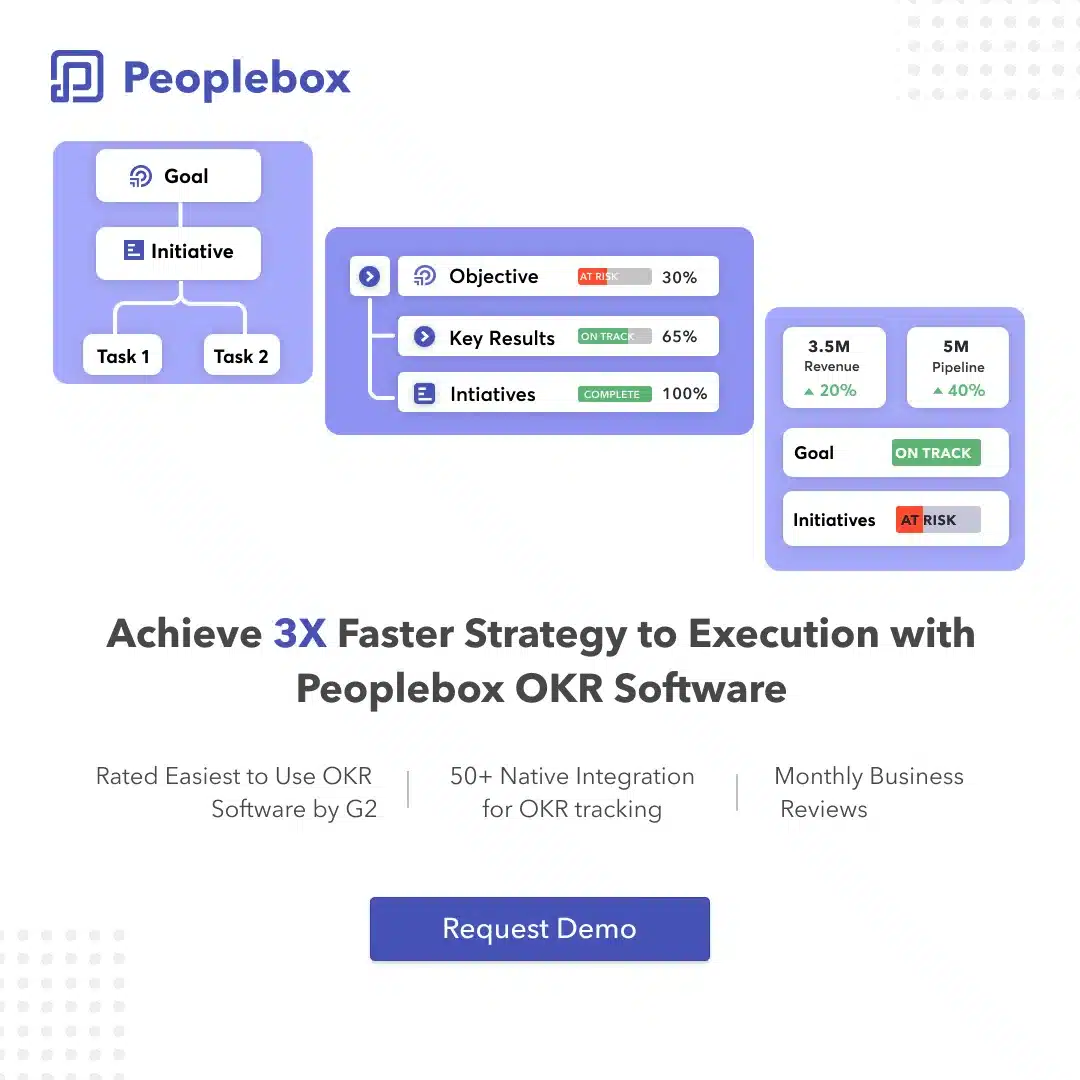Let’s begin with a story. A well-known tech giant decided to scrap its traditional yearly appraisal cycle, replacing it with a year-round system of check-ins.
Considered quite forward-thinking back in 2014, it encountered its share of sceptics. A year later, things looked different. The company had seen a staggering 30 percent drop in attrition levels. In addition, there was a 50 percent increase in voluntary departures as problems were being dealt with as they happened without waiting for the appraisal cycle. We are talking about Adobe and their Vice President – HR, Donna Morris, an oft-quoted case study. And yet, the story never gets old. What is it that transformed a system so widely accepted to suit the needs of a large company? The answer, as it always does, lies in something more basic, more human. One on Ones. Let’s take a moment to let this sink in. This isn’t the only such case. Ed Catamull, co-founder and president, Pixar speaks of One on Ones with equal gusto in his book Creativity Inc.
He rates them higher than the open-door policy he used during the making of Toy Story explaining ‘being on the lookout for problems is not the same as seeing problems’.
As HR managers, we don’t need much to validate their positive outcomes but are equally aware of the challenges involved in getting managers to do One on Ones right.
‘being on the lookout for problems is not the same as seeing problems’ – ED CATAMULL
One on One Meetings as a tool

Not only are they key stakeholders but act as ambassadors of the company and play a crucial role in attracting new talent while getting work done on a daily basis.
According to a Gallup study, a staggering 50 percent employees leave a manager, not a company. A statistic that we are all aware of but can’t dismiss.
One on Ones thus, can become an effective tool in bridging this all pervasive gap between managers and employees.
Think of it this way, when you drive a car for thousands of miles, across the country, you are bound to incur a few problems.
What do you do?
You drive to the nearest service centre and run a service check.
After all, every machine needs a little oiling here and tinkering there to function as desired. Or closer and more pertinent, would be the case with your own health.
A long run on one day and a balanced meal won’t take you any closer to your fitness goals until it becomes a habit.
Think of One on Ones as a similar exercise.
A long run on one day and a balanced meal won’t take you any closer to your fitness goals until it becomes a habit.
Mark Zucherberg, Facebook Founder and CEO among others endorses One on Ones, waxing eloquent about the role they have played in the company’s success.
What’s in it for us (HR)?
First and foremost, for both a company and HR, Heather Sullivan, Chief People Officer at Discord (and previously Udacity) explains, One on Ones create a much needed connection between an employee and the manager.
This in turn results in open communication and does away with the need for mediation. The results of this, we know, are manifold.
From better engagement levels, more employee satisfaction all the way to clearer succession plans. It’s half an employee retention battle won and all it takes is effective One on Ones.
Closer though, it makes our jobs more interesting.
Imagine, the time you spend firefighting and resolving conflict being reduced considerably.
Wouldn’t it help you focus on your role as a strategic enabler in the company focussing on big-ticket items on your checklist?
One on One guides often speak directly to a manager and that’s a cycle we want to break.
It is after all HR managers who enable, facilitate, measure and make One on Ones in a company count.
Not to miss, create a culture of them that impacts a company in a more holistic manner.
Rolling out One on Ones
So, your company does not conduct One on Ones?
Often, getting started on them can be a tedious process and can be met with much refrain from all parties involved.
Don’t let that bog you down, here’s a step-by-step guide to help you roll them out in a systematic, effective manner.
- Educate yourself: Learn and read everything you possibly can about One on Ones and conducting them effectively. This blog, is a good start.
- Educate managers: Communicate with them while keeping it simple. What they are, why are they important and what are some of the tools (refer to the last section) and resources available to them? Use short role play videos to help managers understand the process clearly.
- Training sessions: Conduct regular formal and informal training and information sessions where managers’ queries and challenges are addressed in detail.
- Build a cohort: Get together a group of (say 20 managers) in a round table and get them to lead this effort. Equip them with templates and resources that will set the tone for One on Ones in the company.
- Set a timeline: For the first round of One on Ones, set a timeline. Follow this up with round tables that include managers and employees to assess what is working and what isn’t.
- Finally, as HR managers be available for assistance and any hand holding required during the initial days.
Building a One on One culture
Rolling out One on Ones and doing them right is important.
However, while we do talk about One on Ones as an isolated exercise, we reap their benefits in a company only once it forms a culture.

Before we delve further into the needs and aids of a One on One, let’s take a look at a road map that will help you achieve the long term objective.
Start from the top: This is an HR exercises that could see immense value if implemented top downwards. Check in, monitor and review One on One discipline and quality with senior managers first.
Feedback: Collect formal and informal feedback on the efficacy of One on Ones and wherever possible share positive stories and experiences. This will help employees and managers see the value in One on Ones over time.
Sustained training: Include One on Ones in all manager training and development programmes. Suggest better questions to ask, use role play techniques and prepare them for tough questions that they may encounter in a One on One.
Conflict resolution and accountability: In the event of a performance issue or internal conflict, request One on One notes and their resultant follow-through actions. This will build accountability and commitment to One on Ones.
Skip Level One on Ones: A Skip Level One on Ones is a development conversation with a manager’s manager. These can be done less frequently (thrice a year at best).
While they constitute a fairly general agenda and may not be effective as One on Ones per se, they do work as an accountability tool for One on Ones between managers and direct reportees.
It is helpful to include a check in on these One on Ones, their frequency and efficacy as part of the agenda.
And lastly, include One on Ones in HR Performance reviews that help close the cycle on accountability from the HR perspective.
In all of the above, HR performs a crucial role in ensuring the One on One machinery is at its best in a company.
In the next section, we take you through the process that acts as a ready-reckoner for an HR manager to help conduct One on Ones, bolster managers and track results effectively.
The HR Guide to One on Ones
1. Frequency
Once a month is bare minimum and acceptable, but various HR experts we consulted recommend a weekly frequency.
“I believe the ideal frequency for a one on one is conducted on a weekly basis. This ensures that both the employee and their manager/colleague are aligned and driving towards the same goal,” explains Heidi Lynne Kurter, Leadership Coach & HR Culture Consultant at Heidi Lynne Consulting.
“I believe the ideal frequency for a one on one is weekly. This ensures that both the employee and their manager/colleague are aligned and driving towards the same goal” – Heidi Lynne Kurter
2. Duration
How long do you spend on a One on One? Is 30-minutes enough or would your employee find that restrictive?
Does it cover all the items on your agenda?
HR experts unanimously believe a 30-minute duration is adequate to produce results but it might be fruitful to actually set an hour aside, so they (managers) aren’t seen rushing through it.
If time is running out though, urge them to prioritise.
3. Agenda
To begin with, it is important to establish the difference between a One on One and a regular status update.
A One on One is a development-focussed conversation with an employee at its centre, their issues, career growth and so much more.
A status update may be one of the ways to break the ice, but cannot form the objective of the conversation.
HR Leaders like Kim Scott and Ben Horowitz among others recommend that it is an employee who should take ownership of a One on One and that includes setting the agenda.
And while at it, let’s talk about the agenda itself, one that is the right balance of being focussed and flexible. Divya Verma, Employee Engagement Strategy Expert (18 years with Gallup), Freelance Consultant, shares a structure that has worked for her over the years.
“The structure should include; a status update on work, recent successes, challenges or problems resolved, challenges or problems that need attention, planning for upcoming work and considering potential roadblocks, employee’s short term and long-term goals and development needs aligned to the same,” she says.
This, while allowing an employee enough space and time to bring up their own issues is what forms the crux of it.
A ready-to-use agenda
- What should be your meeting agenda?
- Review notes from the previous one on one and include pointers in this week’ agenda
- The agenda should be decided in a way that it helps you take a deep dive into your employees’ perspectives. Some areas that will come in handy during the conversation are mentioned below:
- Employees’ comments on his/ her performance
- Employees’ comments on team collaboration
- Employees’ career goals/ aspirations
- Feedback on employees’ performance, collaboration, delivery etc.
- Check if the employee needs any support to perform better.
4. The Conversation
If it was possible to put it down in a phrase, this is what we would say about a One on One- converse, but listen first.
Remind a manager that it’s the listening that holds more value in a One on One.
Encourage them to start with a little chit-chat, like a great sporting event that just passed or the weekend, family or anything else you may have in common.
It will put the employee at ease and set the tone for the rest of the meeting.
A status update is fine, but don’t make it long drawn, warns Ghandikota.
Similarly, insist on talking about issues without focusing your energies on assigning blame. Instead, find resolutions or a way forward.
Insist on talking about issues without focusing your energies on assigning blame
From here on, move to the agenda (or one created by the employee) addressing every topic on it.
Following an order of difficulty will give both of you enough prep time for the difficult questions/ feedback.
Get an update on action items from the last One on One and assign fresh actionable items for this one. Finally, end on a hopeful note.
You certainly want both people leaving a conversation feeling happier and driven, not morose and disappointed.
If this isn’t enough, you could give your managers the following ready-reckoner so they stay on the same page.
What One on Ones are and aren’t for?
While it is ok to review work, resolve problems, recognise achievements and effort, it is essential to talk about the future. Make your feedback specific and actionable, involve your team member in solving problems.
Be open to receiving feedback and turn it into actionable items.
Ask and discuss individual career aspirations and goals; what is the employee’s ambition for the year, the next 2 years and so on?
What are the learning needs or experiences that may support these goals? Break career goals into bite-sized targets and assign actions and timelines.
Questions your manager could ask
- Start with an ice-breaker – Did you see yesterday’s match? etc.
- How was your last week/ month at work?
- What are the things that are working? What are the things that aren’t working?
- What challenges are you facing? What can I do to help you ?
- What are your short term and long term aspirations?
- Action items for short term aspirations (internal(extra inputs)/ external factors (HR approval/ budget etc.)
- Action items for long term aspirations
- Are you interested in any work related certification?
- How comfortable are you with your current team? Do you have any ideas to help the team improve, or work better?
- Is there anything that I can do to support your growth in the firm?
Ones to avoid
- Never use one on ones as a status updates only
- Avoid using direct yes/ no questions. E.g Do you like your role? Instead ask what do you like about it?
- Don’t stretch beyond an hour. The ideal time is 30-45 mins. If you have too many items to discuss then prioritise
- If you are having tough conversations with your employee, don’t leave it open. Always close it with a supportive statement. Remember to start and end the meeting on a positive note.
5. Notes
According to a Gallup survey, managers are accountable for 70 percent variance in Employee Engagement.
One on Ones with managers then can be a treasure of resources that are barely every mined enough.
How do you make the most of them?
Notes are one such way. Notes aren’t difficult, but could become much easier with some guidance. And this doesn’t mean a manager needs to spend time buried in a laptop/ notebook.
Note-taking guide
- Areas could be under any of these categories:
- Performance
- Potential (Growth and Learning Aspirations)
- Behaviour (Collaboration and Personal)
- Prioritise and club areas of concern according to importance and urgency. Depending on the criticality or urgency, plan of action either from manager’s end or employees’ end should be created
The next, crucial but controversial question is the sharing of these notes.
What do you share with your HR and what do you keep for reasons of confidentiality.
HR experts weigh in here and say that learning and development needs are best shared as are succession plans.
Heather Sullivan says she isn’t a fan of the idea and it takes away from what these meetings are about trust, first and foremost.

6. Follow through
Picture a manager who gains an employee’s trust through a One on One, makes promises and fails to live up to them or worst slips up on keeping the employee updated. It’s a lot harder to build trust than break it.
As such, following through is nearly as important as the conversation itself.
Assigned action items and notes only add to the accountability and as Ghandikota rightly says ‘minimise human error and ensure everybody is on the same page with what needs to be done’.
For consequent One on Ones
- Use notes to identify discussion points for the next one on one e.g. what are the areas that employees are going to work on and what should be measured or talked about in the next one on one
- Depending on the context (aspiration/ problem) – escalate to appropriate authorities within the firm and identify personal action items for yourself to address the aspiration/ problem
7. Tools
Like every other thing in this day and age, technological advancements can make the task of One on Ones easier and more effective for managers and HR managers too.
As such, a variety of tools are available that can help with note-taking, scheduling and more.
Nova from Peoplebox is a personalised AI coach for managers that acts as an enabler for great One on Ones.
Right from suggesting an employee name to recommending agenda items and points of discussion all the way to actually scheduling the One on One, Nova has your back.
It also nudges managers to keep them on top of their One on One game.
Now that we’ve addressed nearly every aspect of a One on One, the last, often controversial question remains. Should OKR/KRAs be linked to One on Ones?
It may sound simple, to link One on Ones to a manager’s OKRs which not only mandates them but pushes them to keep at it with stipulated frequency.
However, there is a reason why this isn’t common practice and can be counter productive in terms of their actual efficacy.
Ghandikota comes to our aid here and says, “The air gets sucked out of performance management and invariably the One on One becomes more about the manager than the employee”.
The decision in this case is what suits a company and its practices.
In either case, as HR managers, we continue on our journeys to enable and facilitate better One on Ones.
It’s the little things that make better workplaces after all!








